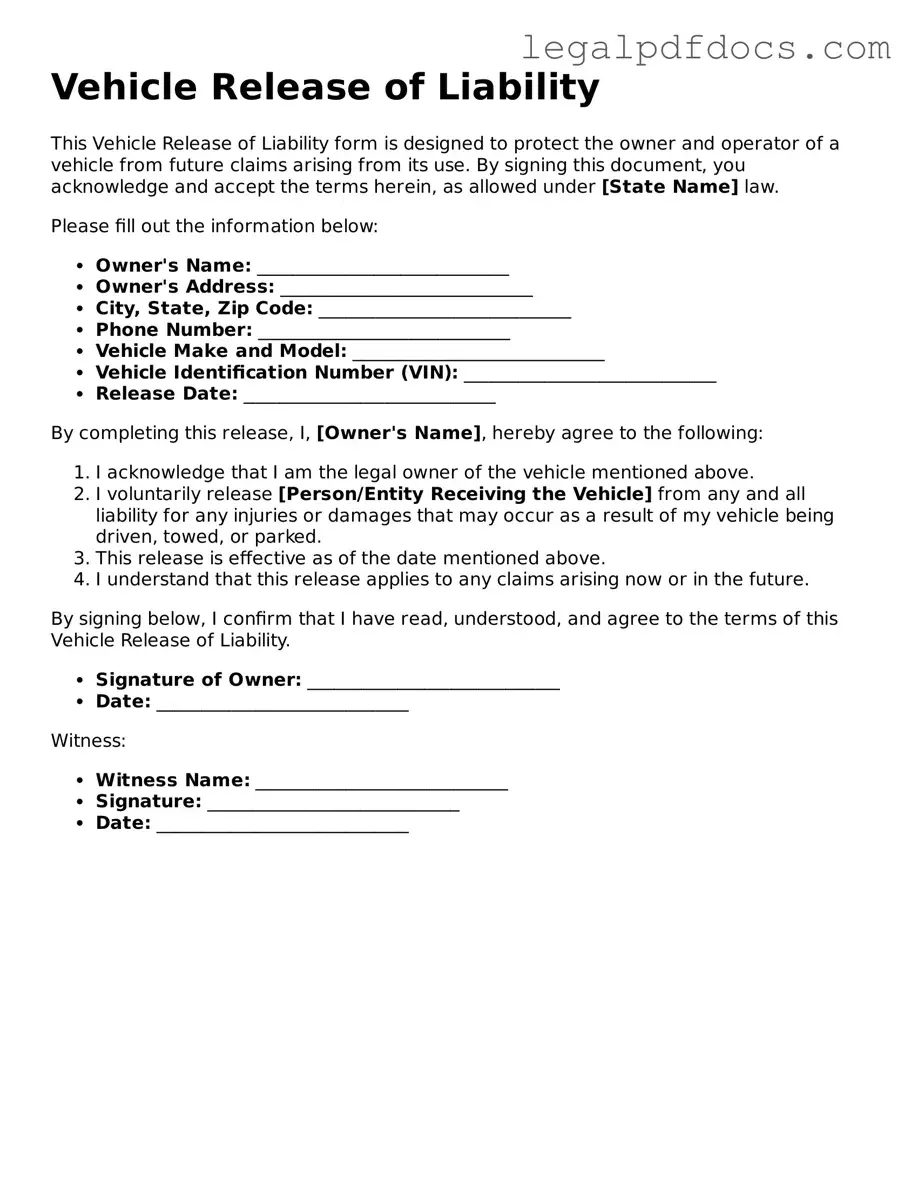Vehicle Release of Liability Template
The Vehicle Release of Liability form is a legal document that protects vehicle owners from being held responsible for any accidents or damages that occur after they have transferred ownership of their vehicle. This form helps clarify the responsibilities of both the seller and the buyer, ensuring a smooth transition. To safeguard your interests, consider filling out the form by clicking the button below.
Open Vehicle Release of Liability Editor Here
